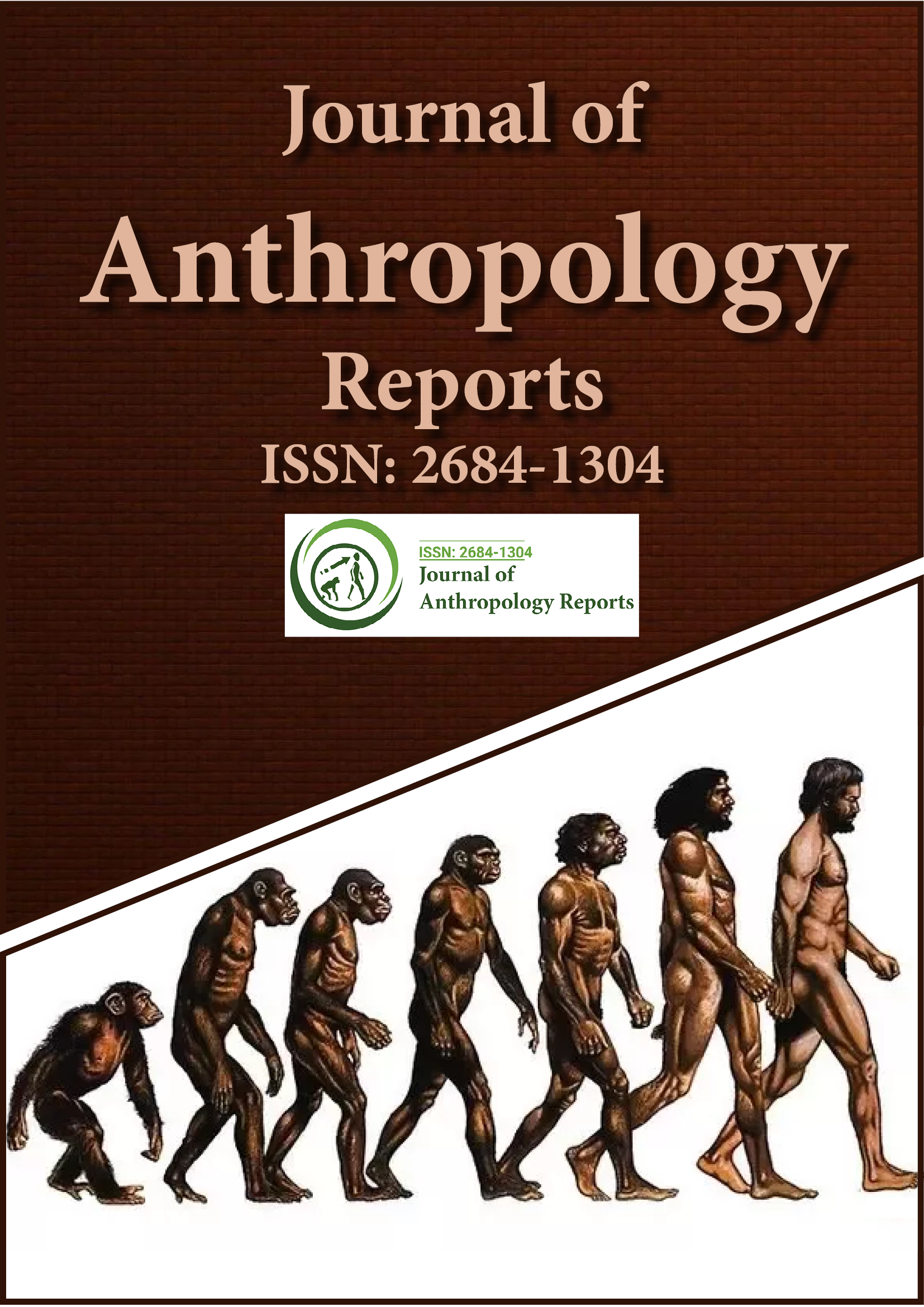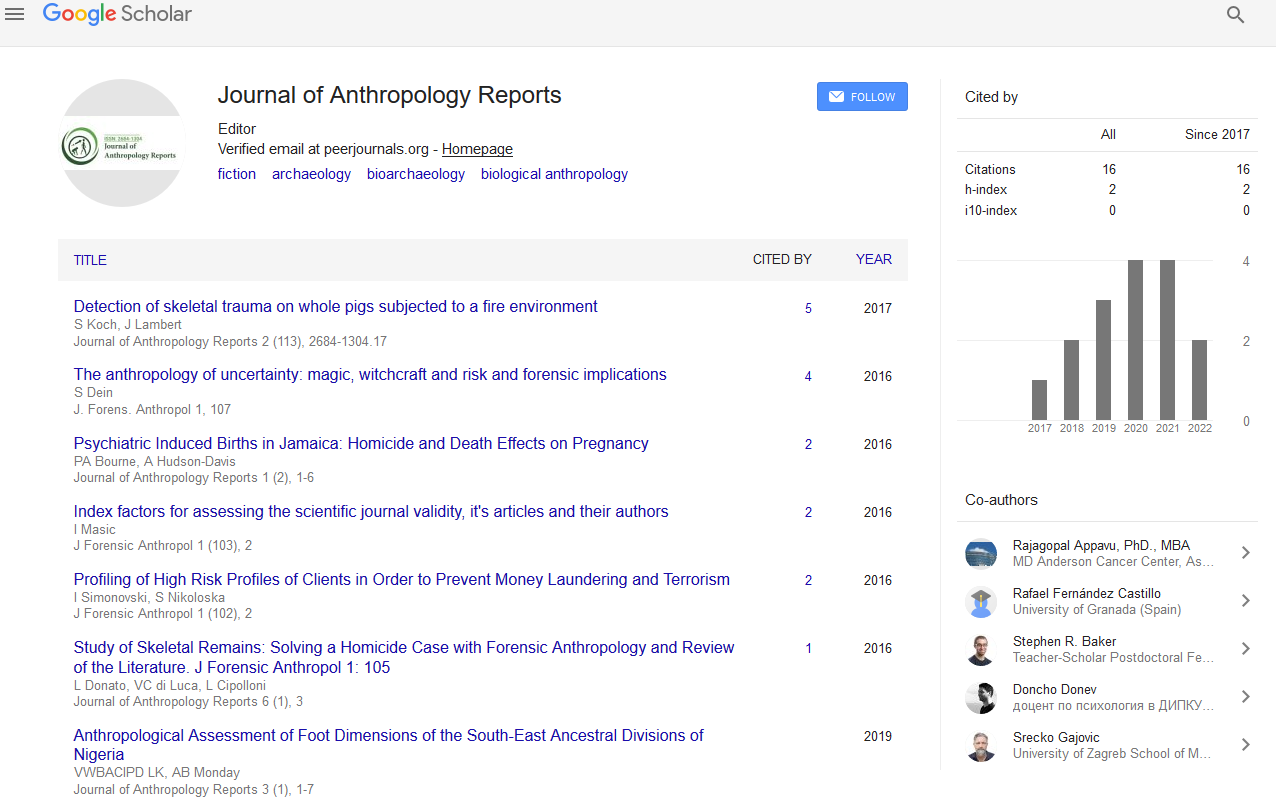Indexed In
- RefSeek
- Hamdard University
- EBSCO A-Z
Useful Links
Share This Page
Journal Flyer

Open Access Journals
- Agri and Aquaculture
- Biochemistry
- Bioinformatics & Systems Biology
- Business & Management
- Chemistry
- Clinical Sciences
- Engineering
- Food & Nutrition
- General Science
- Genetics & Molecular Biology
- Immunology & Microbiology
- Medical Sciences
- Neuroscience & Psychology
- Nursing & Health Care
- Pharmaceutical Sciences
Perspective - (2025) Volume 8, Issue 1
Human Adaptation to Extreme Environments: A Biocultural Perspective
Hiroshi Yanamoto*Received: 24-Feb-2025, Manuscript No. JFA-25-29402; Editor assigned: 26-Feb-2025, Pre QC No. JFA-25-29402 (PQ); Reviewed: 12-Mar-2025, QC No. JFA-25-29402; Revised: 19-Mar-2025, Manuscript No. JFA-25-29402 (R); Published: 26-Mar-2025, DOI: 10.35248/2684-1304.25.8.215
Description
Humans have lived in a wide range of environments, from icy mountain peaks to dry deserts and high-altitude plains. Surviving and thriving in such settings requires more than physical adjustments it also depends on behavior, technology and culture. A biocultural approach considers both the biological changes that occur over time and the ways in which people use knowledge, tools and social systems to deal with their surroundings.
In cold regions such as the Arctic, people have developed ways to maintain body heat through clothing made from animal skins, insulated shelters and high-fat diets. These cultural strategies are paired with biological traits that help the body cope with freezing temperatures. For instance, some groups show higher metabolic rates, which help generate more internal warmth. Over generations, these combined responses allow communities to live in areas that would otherwise be too severe for long-term settlement.
In high-altitude zones, such as those in the Andes or Himalayas, people face low oxygen levels. The body needs to work harder to deliver oxygen to organs and muscles. Populations that have lived at these elevations for thousands of years often show physical changes such as larger lung capacity or increased blood flow. These traits are inherited and give them a better chance of survival compared to new arrivals. At the same time, cultural adaptations also play a role. People adjust work schedules, design homes to protect from strong winds and cold and rely on traditional knowledge to manage health issues related to altitude.
In hot, arid environments like the Sahara or parts of Australia, the challenge is to retain enough water and avoid overheating. People in these areas tend to have long histories of managing their exposure to the sun. Cultural practices include wearing loose clothing, timing outdoor activities to avoid the hottest part of the day and maintaining traditional water storage techniques. Biologically, some groups may have traits that support more efficient sweat production or body shapes that help release heat. Together, these responses reduce stress from high temperatures and limited water sources.
Tropical rainforests bring different issues, such as constant humidity, high disease risk and dense vegetation. Communities living in these areas develop detailed knowledge about plants, including which can be used for medicine, food, or building. Their diets often rely on a wide range of natural resources and their mobility patterns are suited to the uneven forest floor. In terms of biology, certain populations show resistance to local diseases, such as malaria, which has been linked to genetic traits passed through generations.
The Arctic, deserts, mountains and forests may appear very different, but they all require careful adjustment in both physical and social terms. The human body alone cannot meet all the demands of such environments, so cultural knowledge becomes essential. This includes not only the use of tools and clothing, but also shared ideas about how to act, when to move and how to prepare for changes in weather or food supply. These shared responses help people manage risk and support one another in challenging conditions.
Conclusion
Biocultural responses are not fixed. They continue to change as people gain access to new tools, medicines, or forms of communication. For instance, satellite phones and snowmobiles have changed how some Arctic communities manage long distances, just as solar panels have improved water access in some deserts. Still, these modern solutions are often used alongside traditional ones, showing that adaptation is a process, not a single event. By considering both body and behavior, a biocultural approach offers a complete view of how humans manage difficult environments
Citation: Yanamoto H (2025). Human Adaptation to Extreme Environments: A Biocultural Perspective. J Anthropology Rep. 8:215
Copyright: © 2025 Yanamoto H. This is an open-access article distributed under the terms of the Creative Commons Attribution License, which permits unrestricted use, distribution and reproduction in any medium, provided the original author and source are credited

